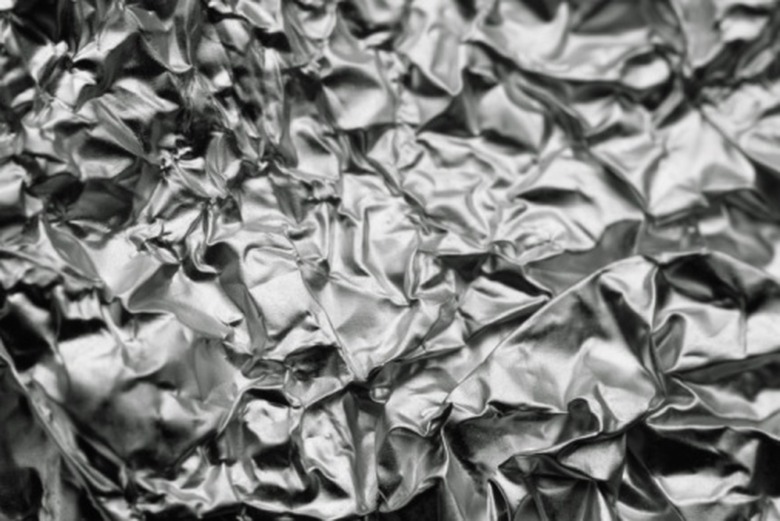Aluminum is a metal that is used in a vast number of applications in our daily lives. It is strong and light, making it ideal for airplanes and to hold our soda. Aluminum also has applications in chemistry, providing pigment in paints and anti-rust protection to iron and other more susceptible metals. Aluminum powder can also be used in high energy chemical reactions, including rockets and explosives.
Step 1
Collect aluminum to grind. Aluminum foil will grind more easily and provide a smaller grain size; But if your coffee grinder is powerful enough, you can use aluminum cans as well.
Step 2
Clean the aluminum. If you are using aluminum cans, use the sandpaper to remove the paint, and reveal the silvery surface beneath. This will reduce the contaminants in the aluminum powder. Whether you use foil or cans, give them a good scrub under water with a mild detergent. Let them dry fully.
Step 3
Cut the aluminum into small pieces around a inch in size. To cut into the can, place on a hard surface, and with a solid grip on the bottom of the can, push the pointed end of one of the scissor blades into the can until it pierces the surface. Carefully cut around the diameter, taking care not to cut yourself on the sharp edges. Discard the top and bottoms of the can, which are too thick, and cut the side into small pieces. If you are working with foil, cut it into small pieces.
Step 4
Grind the foil in a coffee grinder using short bursts. Place the pieces into the grinder, secure the lid, and grind the foil. Check the temperature of the aluminum frequently. If the aluminum is getting warm, take a break to allow the aluminum to cool and prevent combustion of the powder.
Step 5
Refine the grind using a mortar and pestle.
Things Needed
- Aluminum foil or cans
- Sandpaper
- Abrasive pad
- Scissors
- Coffee grinder
- Mortar and pestle
Warning
Keep the powder away from open flames, as aluminum powder can combust very easily.
Work in short bursts with the grinder. If you grind continuously, you’ll build up heat and can risk combustion of the powder.
References
- “Illustrated Guide to Home Chemistry Experiments: All Lab, No Lecture”; Robert Bruce Thompson; 2008

